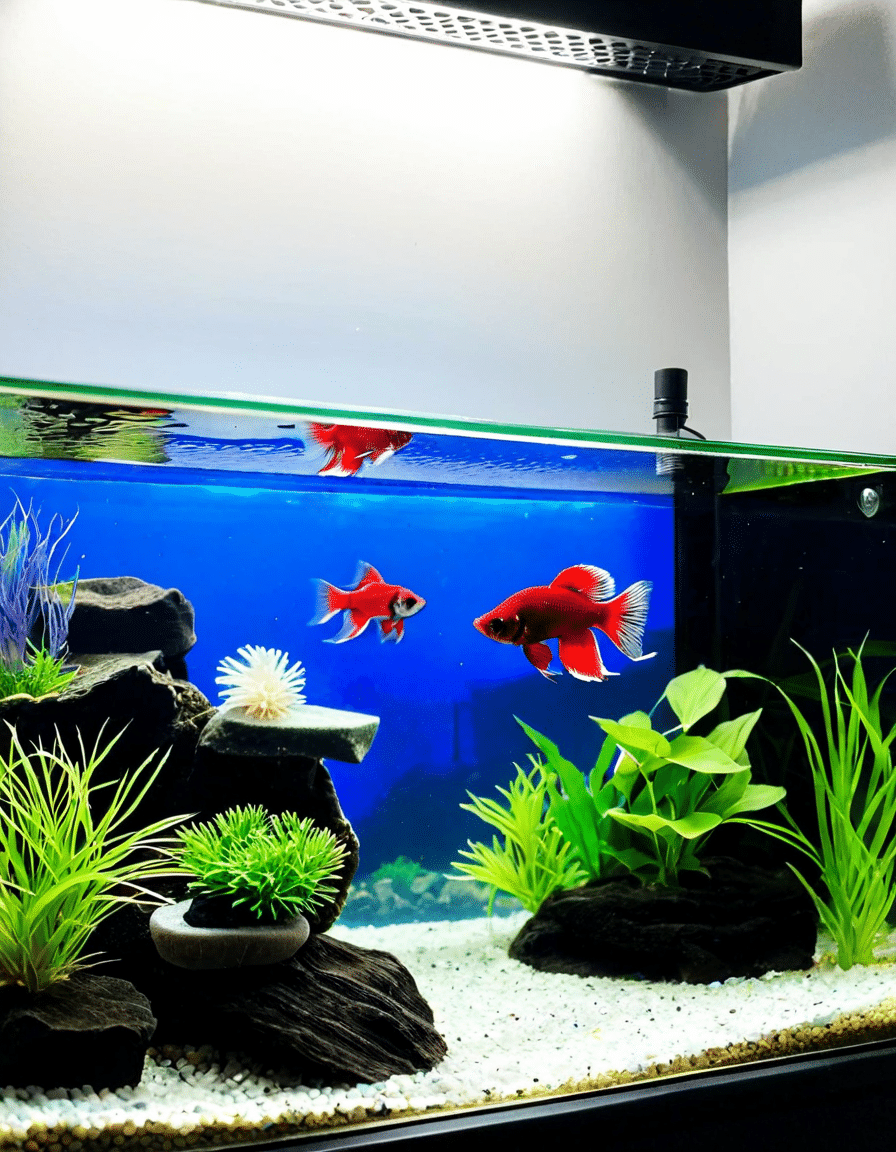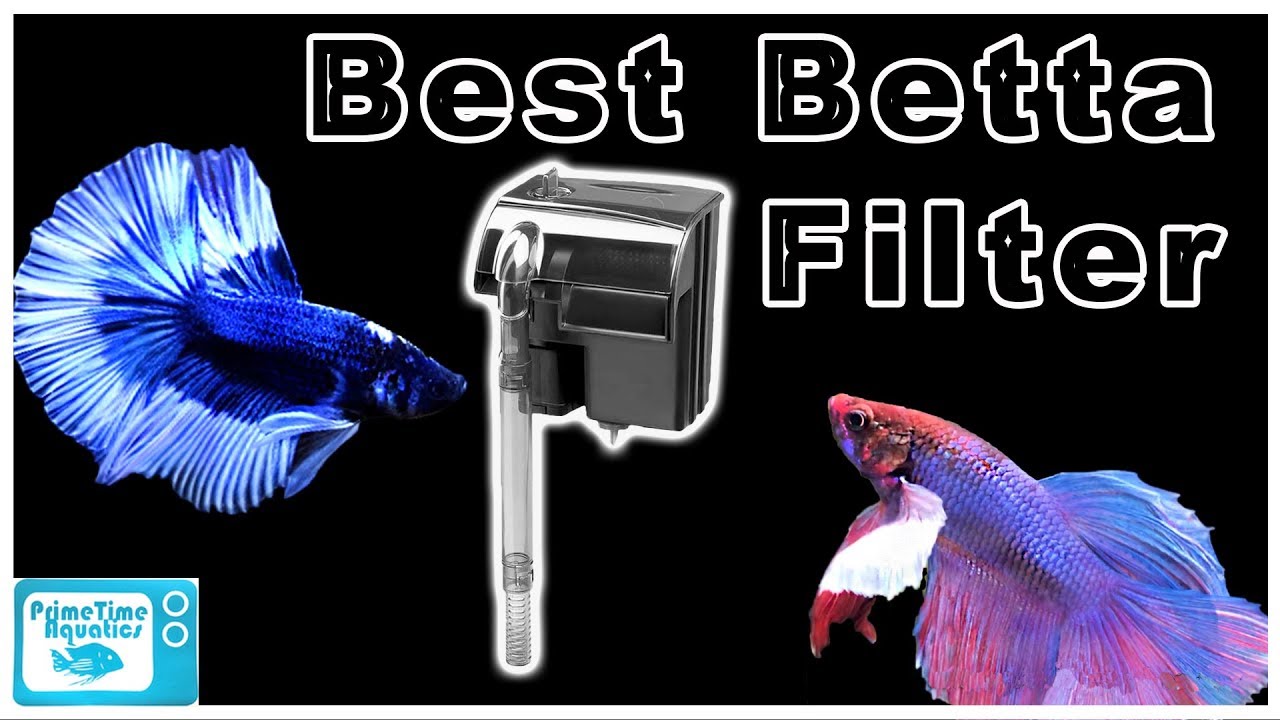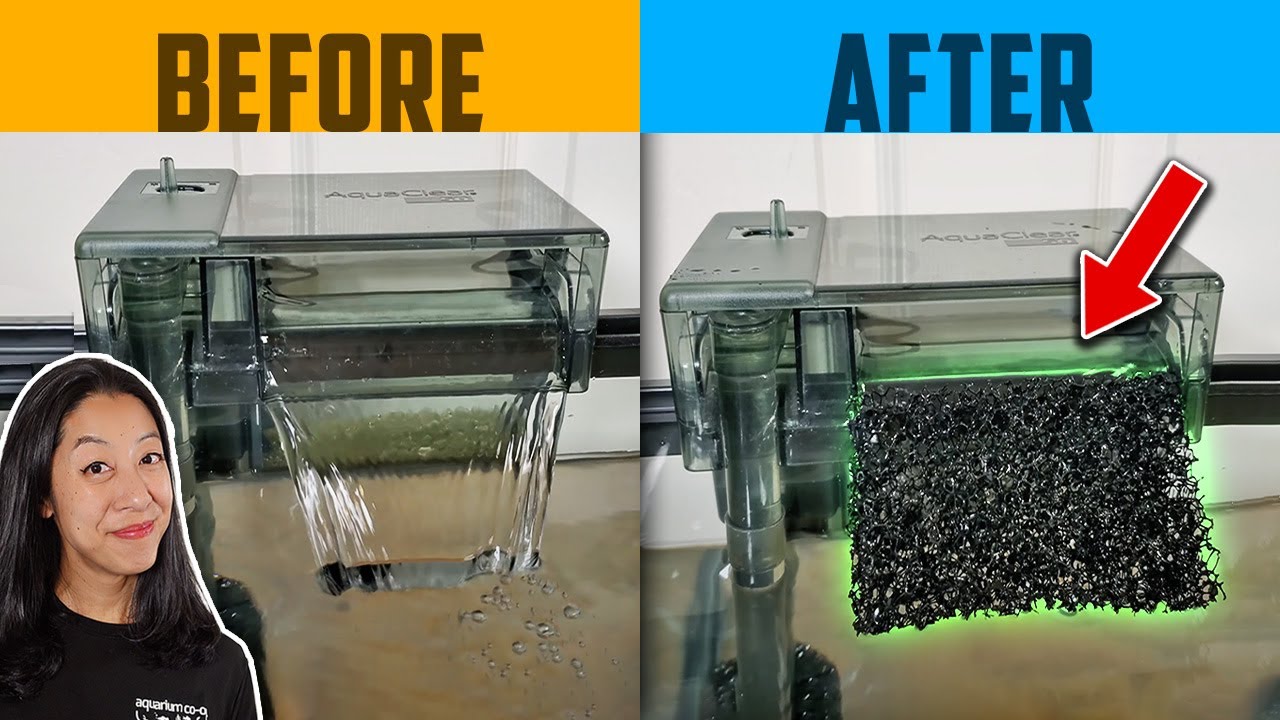Setting up a filtered tank for betta fish isn’t just another step in your pet care routine; it’s a game-changer. A proper filter helps keep your aquatic environment clean, reducing harmful toxins and ensuring your vibrant bettas thrive. Poor water quality can lead to numerous health issues like fin rot or swim bladder disease, which can be downright heartbreaking for any betta owner. That’s why investing in a reliable filter for your betta tank is crucial. It promotes optimal water conditions, which are key to your fish’s health and well-being.
Why a Filtered Tank for Betta Fish Matters
Keeping your betta in a filtered tank isn’t just about providing a beautiful aesthetic; it plays a huge role in building a thriving ecosystem. Betta fish can be sensitive little creatures, and poor water quality can lead to chronic stress. Stress is a major factor that can put them at risk of various health issues. A well-filtered tank can make all the difference, offering cleaner water and reducing stress levels. With a filter in place, your betta can swim freely within a stable environment rather than having to deal with the rollercoaster of fluctuating water conditions.
Top 7 Benefits of a Filtered Tank for Betta Fish
A top-quality fish tank filter for betta fish, like the Fluval U Series, features mechanical, chemical, and biological filtration. This combination significantly enhances water conditions by removing debris, toxins, and odors.
Bettas are known for their territorial nature; that’s no surprise! Providing a filtered tank can minimize aggressive behaviors caused by stress. A stable environment can lead to healthier and more lively fish, so it’s a win-win.
A filtration system promotes the growth of helpful bacteria that break down toxic waste, smoothing out the nitrogen cycle. This is indispensable not just for your betta but also for any fresh water fish for the tank like neon tetras or guppies.
Filters like the Aqueon QuietFlow 10 not only clean the water but also aerate it. More oxygen means happier fish, and let’s be real, a happy betta is always more vibrant and active.
Keeping a delicate balance is essential. Using a filter helps manage the waste produced by live plants for fish tank and other inhabitants, curbing issues like algae blooms and fuzzy tank walls.
A well-filtered tank can easily incorporate other compatible species, such as shrimp for fish tank environments. Plus, diverse inhabitants create an engaging ecosystem that benefits your betta and other tank mates alike.
Filters help in creating flourishing environments for live plants. Plants can serve multiple roles, from enriching oxygen levels to providing hiding spots for baby fish or shrimp.
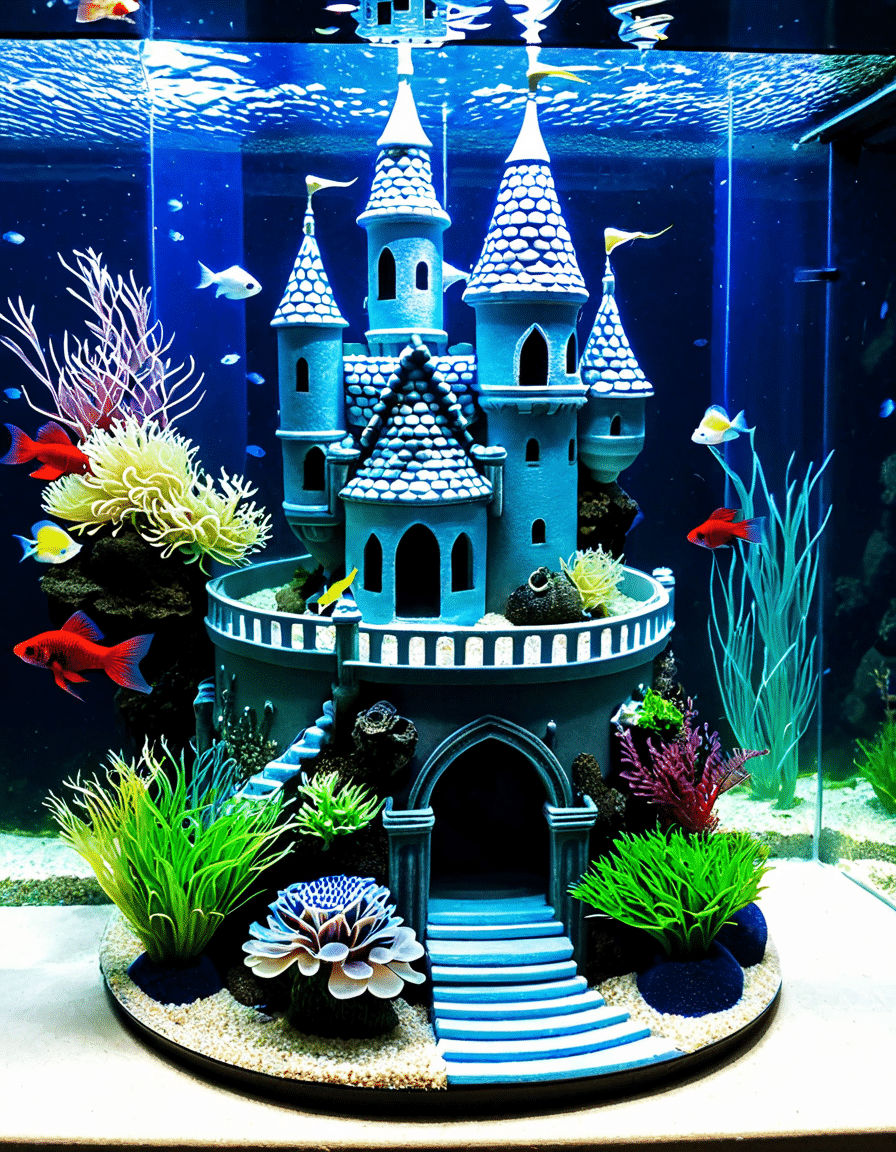
Choosing the Right Filter: Types and Recommendations
With all these benefits in mind, you might be asking, “What type of filter do I need?” Here’s a breakdown of popular choices:
Maintaining a Healthy Environment
Keeping a filtered tank for betta fish means regular maintenance. Here’s what you need to do:
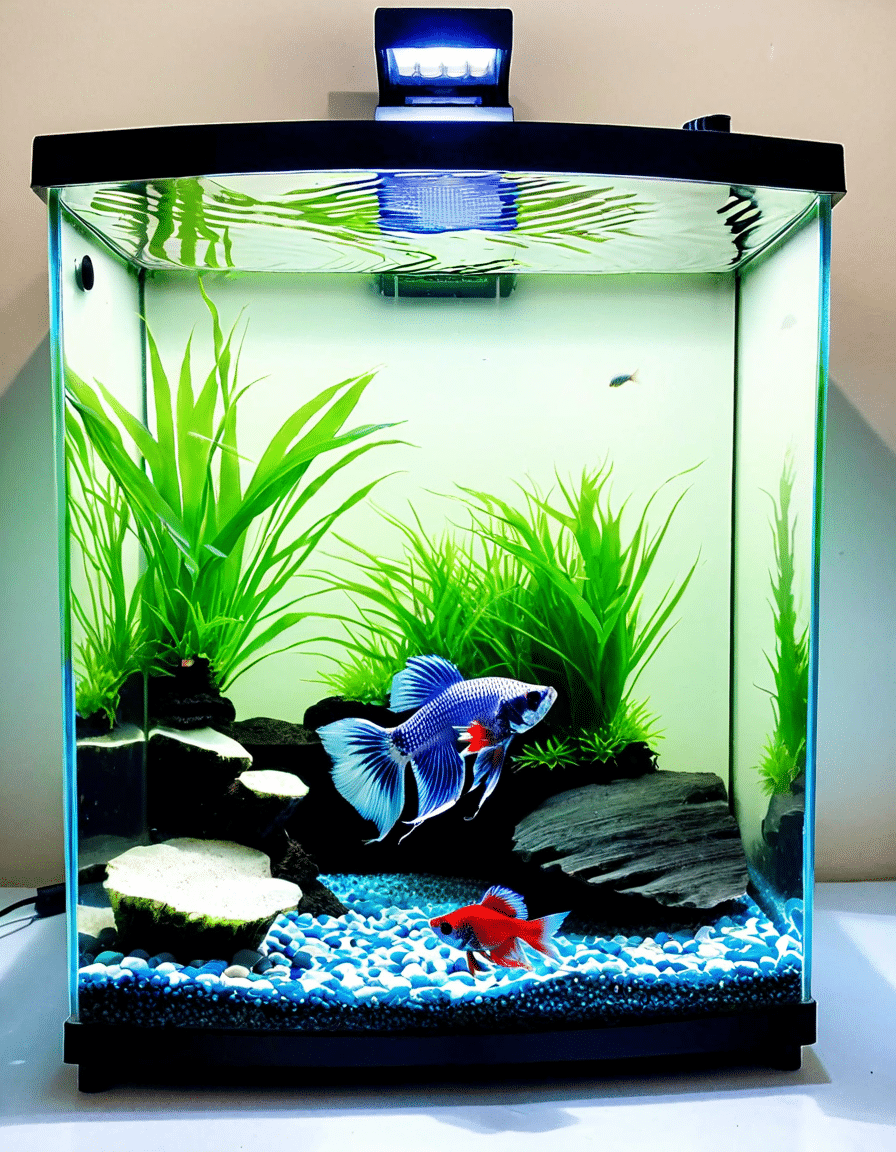
The Role of Tank Mates in a Filtered Environment
Adding tank mates can boost your betta’s quality of life, but it needs careful thought. A filtered tank opens doors for friendly species like Cherry Shrimp, which can help control algae while adding vibrant color to your aquarium. Just remember to swap in peaceful freshwater sharks for fish tanks, like the Rainbow Shark, if you’re looking to enhance the visual appeal while also providing companionship.
Enhancing the Tank with Live Plants and Diverse Inhabitants
Creating a natural habitat with live plants can do wonders for your tank! Species like Anubias or Java Fern flourish in filtered environments. They not only beautify your aquarium but also serve as food and safe spaces for shrimp and baby fish. “Greenery,” as they say, adds life to an aquarium, and your betta will appreciate the added shelter it provides.
Innovative Practices for a Thriving Betta Tank
To keep your betta happy and healthy, consider the concept of a community tank that emphasizes biodiversity. By carefully picking compatible species, such as dwarf gouramis, you can add unique interactions. Just be cautious about territorial disputes! It’s vital to provide adequate space and a well-structured environment so that all inhabitants can coexist peacefully.
A thriving, healthy filtered tank for betta fish requires thoughtful planning and diligent maintenance. By understanding the intricate relationships between water quality, plant life, and compatible tank mates, you can create an engaging aquatic haven. This not only nurtures your betta but also contributes to an aesthetically pleasing entertainment space in your home.
If you’re wondering whether spending on a quality filter is worth it, just look at the thriving swimmers like Spice Adams and their love for vibrant fish in well-maintained tanks. Check out Lara Spencer’s aquatic recommendations to elevate your tank game! Always be updated on resources, whether it’s about fresh catches or navigating current interest rates on 30 year fixed mortgages to budget better for your hobby! Remember, healthy fish equal happier environments, so invest wisely in your aquatic pet care.
Filtered Tank for Betta Fish
The Benefits of a Filtered Tank
If you’re thinking about setting up a filtered tank for betta fish, you’re on the right track! Betta fish thrive in clean environments, and a filter keeps their home spick and span, reducing harmful toxins in the water. But did you know that filtering the water can also help maintain the right temperature? This is crucial since bettas prefer warm water—around 76-82°F. Without a filter, your tank can experience temperature fluctuations that stress your fish. You wouldn’t want to deal with a cranky betta, would you?
Oh, and here’s a fun tip: Bettas can recognize their owners! Regular interactions can actually make them more social and less aggressive, so give them a little wave when you pass by their tank. For those curious about fun animal trivia, you might be surprised to learn about other creatures, like lady beetles. While they’re often loved for pest control, there’s debate on whether are lady Beetles poisonous—just( another example of how coexistence can lead to unexpected findings!
Choosing the Right Filter
Now, when it comes to filtering options, you’ve got choices—from sponge filters to canister filters. Each type suits different tank sizes and setups. Sponge filters are great for smaller tanks because they provide gentle filtration without strong currents that can disturb a betta’s swimming patterns. Conversely, canister filters are perfect for larger setups. Regardless of your choice, ensuring your filter’s flow rate isn’t too strong is key; nobody wants their betta battling the currents!
Speaking of battling currents, have you ever wondered about how different breeds of pets adapt to their environments? For instance, the friendly terrier mix dog( can handle a variety of living conditions, much like how bettas adjust to different tank setups. Just like with proper filtration, these dogs thrive when cared for in a way that meets their needs.
Maintaining the Right Environment
After setting up your filtered tank for betta fish, maintenance is essential. Regular water changes—about 20-30% weekly—are a must to keep the tank’s ecosystem balanced and your betta happy. Plus, removing uneaten food keeps the tank clean and minimizes algae growth. Speaking of algae, the more you know about your aquarium’s local ecosystem, the better. Did you know that local food( sources can sometimes provide insights into caring for your fish? Just like local farms focus on sustainable practices, your fish tank thrives when nature is considered.
Lastly, let’s not forget the joy of watching your betta interact with its surroundings! These vibrant fish have unique personalities and can even recognize colored objects—so experiment with colorful toys or decorations in their tank. Just like a lynx point siamese Kittens( play and engage in their environment, bettas love a stimulating space! So, deck out that filtered tank for betta fish and enjoy their animated antics. Remember, a happy betta means a happier home!
